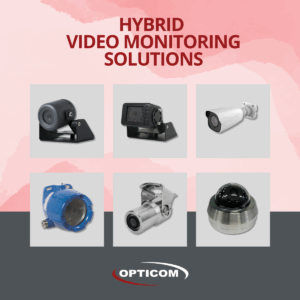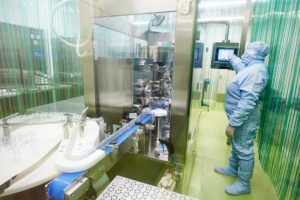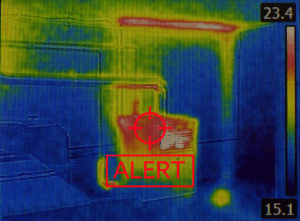If you’re a regular on the Opticom blog, you already know that we’ve been talking a lot about rugged cameras and how they are crucial for an effective monitoring system in industrial applications and harsh environments. While cameras are the foundation of building the right system for your industrial application (they are the most exposed to harsh environments), they are not the only component of the system.
Video monitors play a significant part in the durability and resilience of your system as a whole. Depending on how and where they are used, they need to withstand similar environments as the cameras. Moreover, they are also a big part of lowering your cost of ownership for industrial video monitoring systems.
Let’s take a quick look at video monitors for industrial applications and what to look for in the ones you choose.
Rugged Video Monitors for Industrial Applications 101
Just like with cameras, there is no single monitor that fits every application. Another similarity to industrial-grade cameras is the fact that off-the-shelf monitors are rarely up to the task. Monitors in industrial facilities need to be able to handle dust, vibration, and heat, even if they aren’t right up close to the production floor.
If your operators are on site, you will need video monitors that can withstand the same environmental conditions as your cameras can. Other than that, you can install them any way you need—just like you would a regular monitor. Your operators can have them on their desks, mounted on the wall, or use a combination of the two options depending on their preferences.
Here’s a look at the monitoring room in one of our customers’ sawmills:

What to Look for in an Industrial Video Monitor
In rugged monitors, the image quality, while still important, takes a backseat to the industrial-grade features. The first thing to look for is how durable the monitor is.
More often than not, you will need monitors with metal cases. The metal housing protects the monitor from dust, debris, humidity, vibrations, and more. Off-the-shelf monitors are as sensitive to these elements as cameras, because of their sensitive electrical components, and are also very easy to crack.
Mounts are also very important, especially in high-vibration environments. We always recommend industrial-grade mounts to protect monitors in high-vibration monitoring environments.
Other Features to Consider When Choosing an Industrial Monitor
Now that we’ve gotten the truly important features out of the way, let’s look at the quality of the image. Most modern video monitors come with decent image quality, so this aspect is of less concern when choosing a device for industrial use. In fact, it’s the camera that dictates the biggest part of the image quality.
TVI, HDTVI, and IP are the most common types of industrial monitors. The TVI standard was released in 2014, and it has been rapidly adopted by most camera and monitor manufacturers.
HDTVI comes with better video resolution. However, it all starts with the camera: ideally, you should be connecting your cameras to monitors that have the same technology (e.g., HDTVI cameras to HDTVI monitors).
As the name suggests, IP monitors are ideal for IP cameras. The Opticom IP monitors, like the LCDI-24IP-16, come in various sizes and support more than one protocol, like TCP/IP, DHCP, DNS, HTTP, SMTP.
Final Thoughts
When building your industrial video monitoring system, we recommend starting with the cameras and the camera mounts and then moving on to video monitors. The monitors can be changed more easily than the cameras, but you should still aim to buy devices that can withstand harsh conditions and that can have an above-average lifespan.
We know that all these ratings and standards may be tough to understand. At Opticom, there will always be a consultant by your side to help you choose the best industrial video monitor for your specific application.







